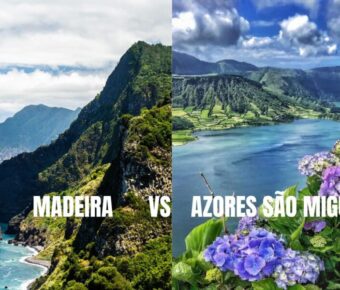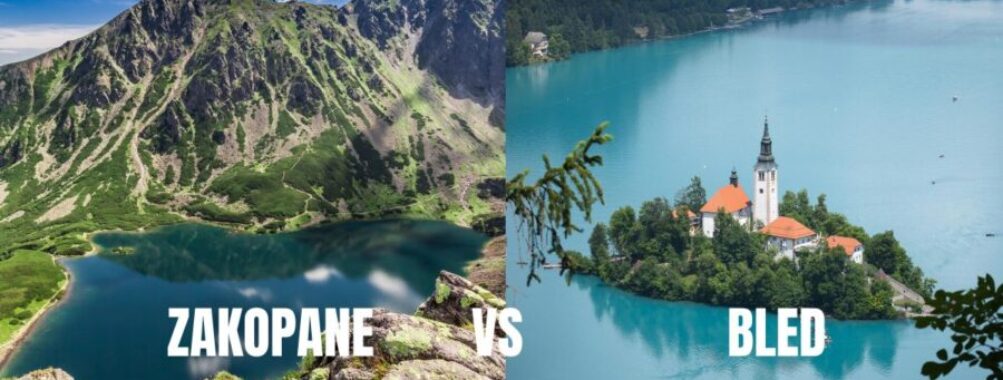
Zakopane vs Bled: Ultimate Guide to Choosing Your Dream Escape
Deciding between Zakopane in Poland and Lake Bled in Slovenia? Honestly, it’s a tough call—both places have that irresistible mountain magic, fresh air, and heaps of outdoor fun. If you crave raw alpine energy with a punch of local culture, Zakopane’s your jam. But if you want a picture-perfect lake where time slows down, Bled might just steal your heart. Which vibe fits your travel style best? That’s the real question.
I’ve wandered both spots, and wow, they couldn’t be more different. Zakopane hums with highlander traditions, hearty eats, and trails that shoot straight into the Tatras. Bled? It’s smaller, gentler, and that little island church in the lake—yeah, it’s even dreamier in person.
Table of Contents
- Key Takeaways
- Zakopane vs Bled: Quick Comparison
- Location and Accessibility
- Atmosphere and Scenery
- Best Time to Visit
- Travel Logistics and Getting There
- Traveling from Kraków to Zakopane
- Traveling from Ljubljana to Bled
- Connecting Zakopane and Bled
- Top Attractions and Activities
- Outdoor Adventures
- Historic Landmarks
- Wellness and Relaxation
- Day Trip or Overnight Stay?
- Zakopane: Day Trip vs Extended Stay
- Bled: Ideal Length of Visit
- Cultural Experiences and Local Life
- Traditional Cuisine
- Festivals and Events
- Budget Considerations and Value
- Accommodation Options
- Dining and Cost of Living
- Frequently Asked Questions
- What unique cultural experiences can travelers expect when visiting either Zakopane or Bled?
- How do the outdoor adventure opportunities compare between Zakopane and Bled throughout the year?
- Can you highlight the differences in the culinary scenes of Zakopane and Bled for food-loving tourists?
- What are the considerations for lodging and accommodations when choosing between a stay in Zakopane or Bled?
- Could you elaborate on the historical significance and landmarks that set Zakopane and Bled apart?
- What are the best times of year to visit Zakopane and Bled for those seeking optimal weather and event experiences?
- Book Your Dream Experience
- More Travel Guides
Key Takeaways
- Zakopane and Bled serve up totally different travel flavors
- Each spot has its own must-see sights and cultural quirks
- Choosing comes down to your pace, budget, and what kind of trip you want
Zakopane vs Bled: Quick Comparison
Zakopane in Poland and Bled in Slovenia both ooze mountain charm, but in their own ways. One is wild and rugged, the other feels like it stepped out of a fairytale postcard, complete with castle views and calm waters.
Location and Accessibility
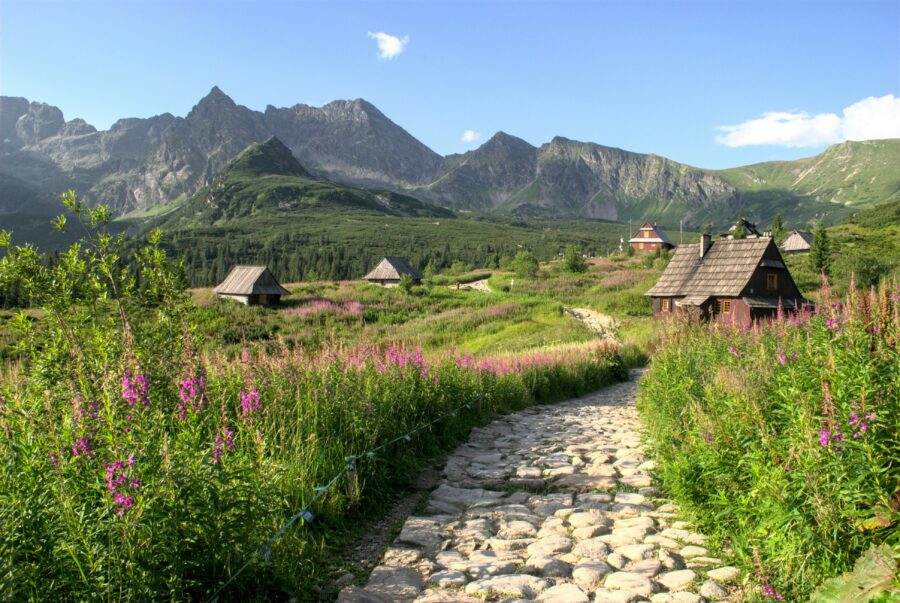
Zakopane sprawls across southern Poland at the foot of the Tatra Mountains. It’s a two-hour ride from Kraków—close enough for locals to escape for the weekend. Getting there is pretty straightforward, though if you’re coming from outside Poland, it can feel like a bit of a trek.
Bled sits in northwestern Slovenia, tucked near the Austrian border. Ljubljana is the closest big city, just 45 minutes away by car or bus. Honestly, Bled slides right into any Central Europe trip, especially if you’re already hopping around Austria or Italy.
If you’re flying in from afar, Kraków usually offers more affordable flights. But if you’re flexible, you might snag cheap flights into Ljubljana too. Both towns are totally doable without a car, but if you want to roam the countryside, having wheels makes life easier.
Atmosphere and Scenery
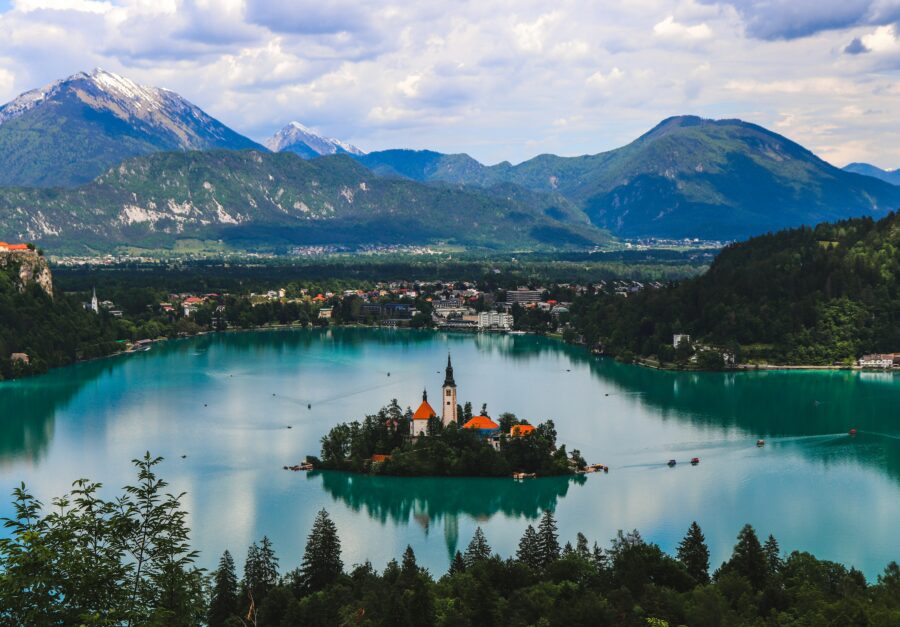
Zakopane’s got this lively, sometimes chaotic, mountain-town buzz. Wooden chalets crowd the streets, and Krupówki—the main drag—bursts with shops, restaurants, and buskers. The Tatras loom right behind everything, and hiking trails basically start at your doorstep.
Bled? It’s quieter, polished, and honestly, feels a bit more “storybook.” The lake is the showstopper, with that tiny island church and a medieval castle perched above the water. The town is compact, with lakeside cafés and a walking path that wraps the lake in under two hours.
If nightlife’s your thing, Zakopane stays up late. If you dream of slow mornings and coffee by the water, Bled’s the move. Both are gorgeous, but in totally different ways—Zakopane’s wild and alpine, Bled’s soft and romantic.
Best Time to Visit
Zakopane comes alive in winter, when skiers and snowboarders hit the slopes. Summer’s awesome for hiking and biking, but spring and fall offer quieter streets if you hate crowds. Sometimes the weather doesn’t play nice—rain and fog can hide those famous peaks.
Bled shines from May to October. Summer brings swimming, boating, and long, lazy days, though July and August can get packed. Fall is magical—those autumn colors around the lake, crisp air, fewer people.
Winter in Bled? Super peaceful, but not exactly action-packed unless you’re into frosty walks or skiing in the Julian Alps nearby. It’s not a ski town like Zakopane, so most people stick to the warmer months. Both places have something to offer year-round, but the vibe shifts a lot depending on when you swing by.
Travel Logistics and Getting There
Getting to Zakopane or Bled is half the adventure. Both are tucked into scenic corners of Europe, but the journey really depends on where you’re starting and how much time you’ve got.
Traveling from Kraków to Zakopane
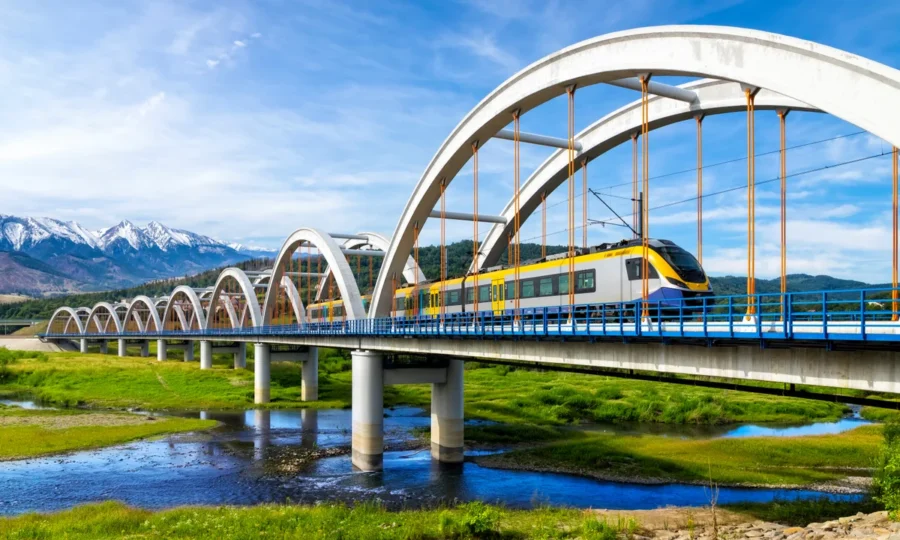
Most folks heading to Zakopane start in Kraków, about 110 km north. The bus is the go-to—leaves every half hour or so from the main station, and you’ll be in Zakopane in about 2.5 hours.
Trains run too, but they’re slower and less frequent. Scenery’s nice, but if you’re short on time, the bus usually wins. I’ve tried both, and unless you’re a die-hard train fan, just grab the bus.
If you rent a car, the drive is pretty easy, but traffic near Zakopane gets heavy, especially on winter weekends. Parking in town? Sometimes a headache. If you’re lugging lots of bags, stash them in luggage storage in Kraków before heading south.
Traveling from Ljubljana to Bled
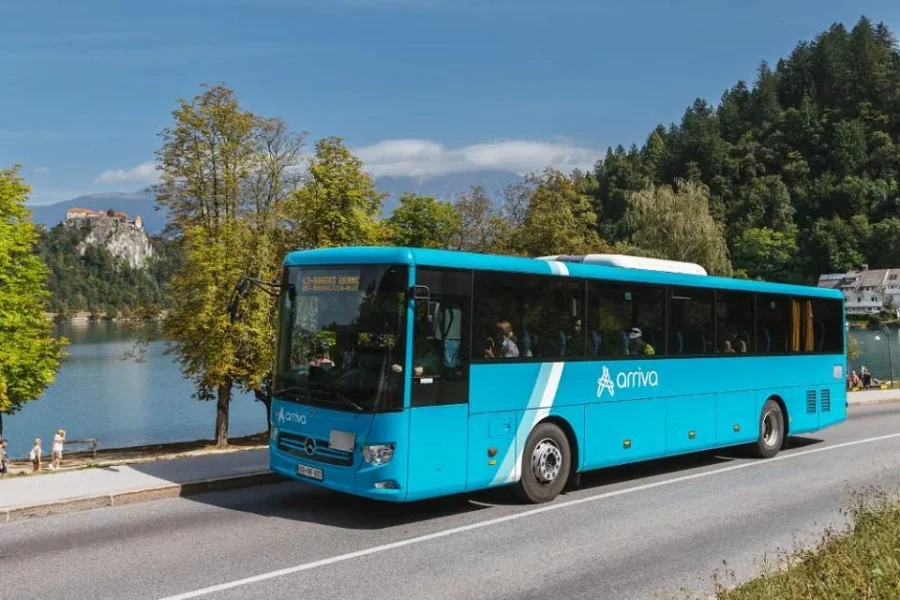
Lake Bled sits just 50 km from Ljubljana, so it’s a breeze to get there. Hop on a direct bus at the main station, and in about an hour, you’re lakeside. Buses run all the time, so planning ahead isn’t really necessary.
Trains are an option, but they stop at Lesce-Bled—not right in town. You’ll need a short bus or taxi ride to reach the lake. Not a big deal, just one extra step.
Driving? Easiest of all. The road from Ljubljana is smooth, and if you get there early, parking near the lake isn’t hard. Flying into Slovenia? Search flights into Ljubljana, then zip over to Bled.
Connecting Zakopane and Bled
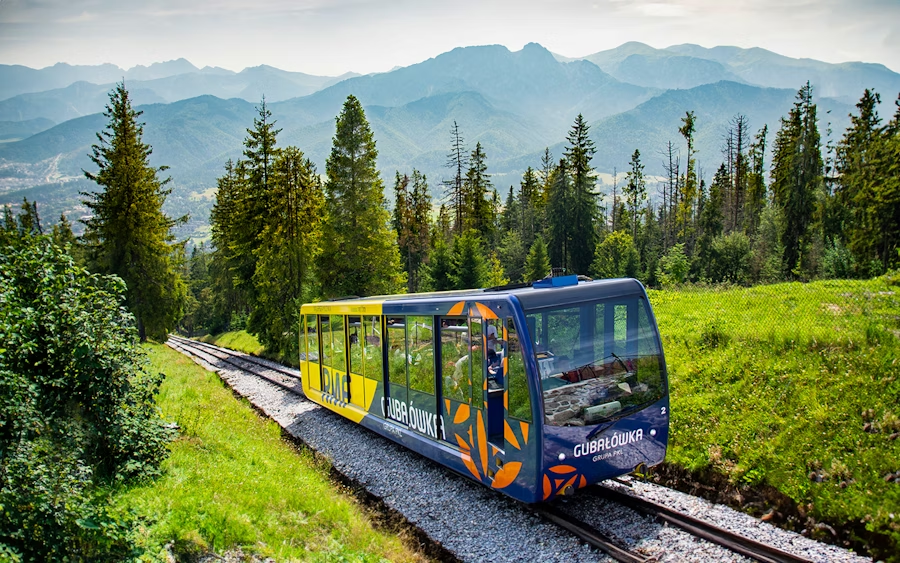
Traveling directly between Zakopane and Bled is, well, not exactly straightforward. These towns live in different countries, and no direct bus or train links them. You’ll usually need to connect through bigger cities like Kraków, Vienna, or Ljubljana.
One route: take a bus or train from Zakopane to Kraków, then fly or grab a long-distance bus toward Slovenia. Flights into Ljubljana or even Vienna pop up with cheap fares if you plan ahead.
If you love overland travel, combine trains and buses—Zakopane to Kraków, Kraków to Vienna, then Vienna down to Bled. It’s a long haul, but the scenery is worth it, and you’ll see a good chunk of Central Europe along the way. For slow travelers, it’s actually a fun part of the journey.
Top Attractions and Activities
Zakopane and Bled both pull you in with natural beauty, deep-rooted traditions, and a mix of chill and adrenaline. Whether you’re chasing mountain trails, old-world architecture, or just want a spa day, each place has its own magic.
Outdoor Adventures
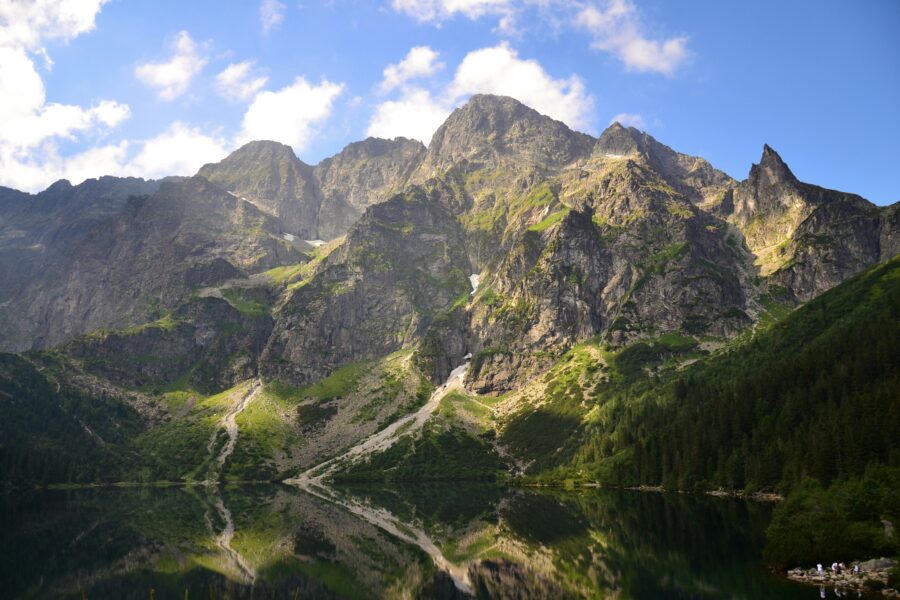
In Zakopane, you’re right at the edge of the Tatra Mountains. Trails like the one to Morskie Oko Lake are well-marked—options range from easy strolls to full-day treks. Winter turns the town into Poland’s ski capital, with slopes for every skill level.
Bled flips the script. Row a wooden pletna boat to the island, or hike up to Ojstrica for those classic lake views. Triglav National Park is just minutes away, offering alpine hikes, waterfalls, and even canyoning if you’re up for it.
Organized tours? Super easy to book activities in both places, from rafting in Slovenia to guided hikes in Poland.
Historic Landmarks
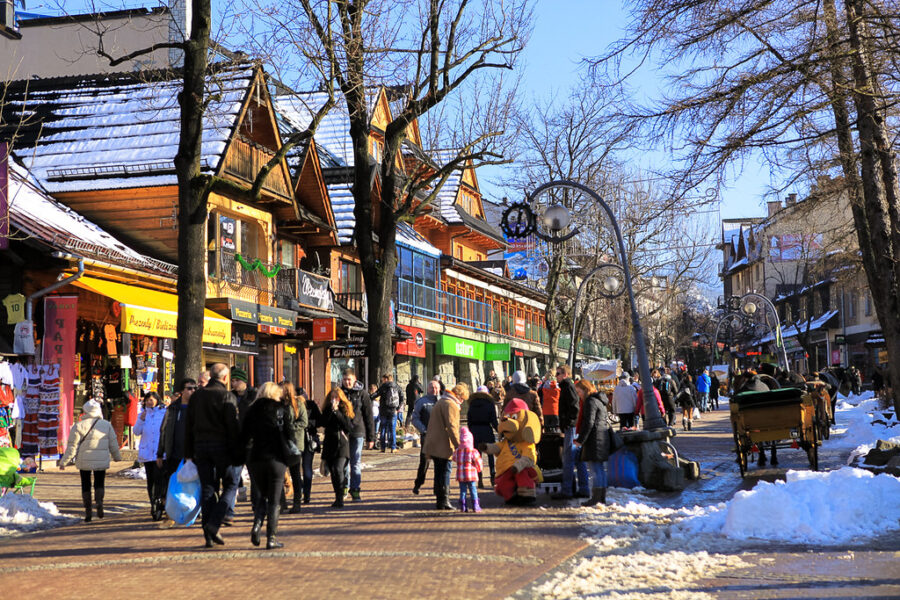
Zakopane’s wooden architecture is a hidden treasure. The villas on Kościeliska Street show off the unique Zakopane Style, dreamed up by Stanisław Witkiewicz. The Old Church and cemetery feel more like a stroll through history than a checklist stop.
Bled’s crown jewel is Bled Castle, perched high above the lake. Inside, you’ll wander medieval rooms, peek at a small museum, and maybe check out the working printing press. Sure, it’s touristy, but those terrace views? Worth it.
Both towns blend culture and charm. In Zakopane, Krupówki Street doubles as a cultural walk, with the Tatra Museum and traditional food stalls. In Bled, the island church and its steep staircase are a must, even if you skip ringing the wishing bell.
Wellness and Relaxation
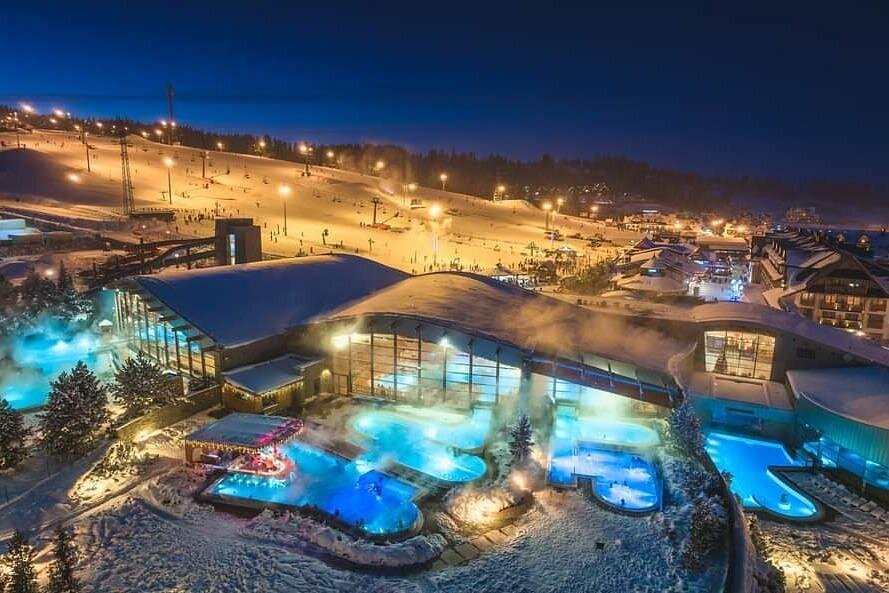
After a day on the trails or sightseeing, both towns know how to help you unwind. Zakopane’s thermal spas are fed by natural hot springs—some are splashy family water parks, others are quiet pools with mountain views. Winter soaking while snow falls? Yes, please.
Bled is all about that slow pace. You can cycle around the lake, sip coffee at a lakeside café, or book a wellness retreat. Many hotels have their own saunas and pools, and it’s honestly easy to switch off here.
Short on time? Day trips that mix sightseeing with relaxation are easy to plan—think a thermal bath after a mountain hike. It’s a great way to balance adventure and downtime without overthinking it.
Day Trip or Overnight Stay?
Some places are fine for a quick visit, but others really reward you for slowing down. Zakopane and Bled? They sit right in that sweet spot where a day trip works, but staying overnight totally transforms the experience.
Zakopane: Day Trip vs Extended Stay
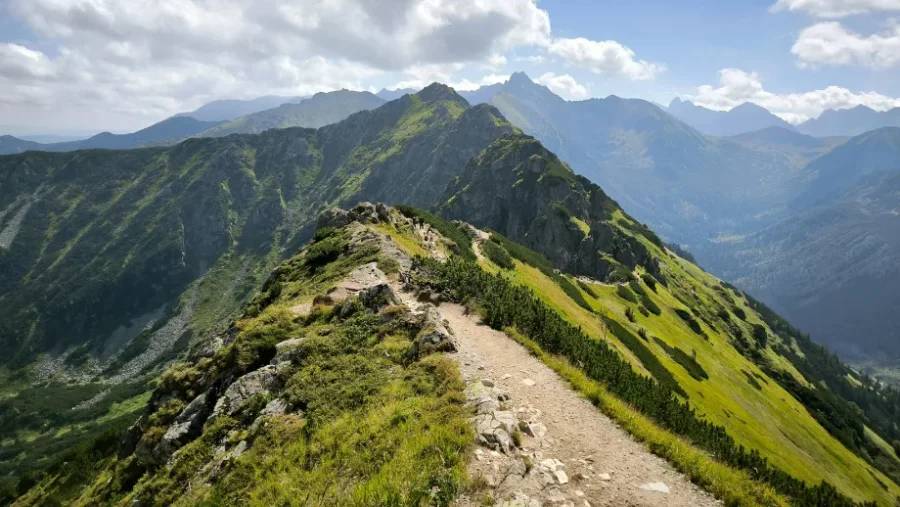
If you’re based in Kraków, you can do Zakopane as a day trip. Buses run often and the ride takes 2–3 hours each way, though weekend traffic can stretch that to four. You’ll have time for Krupówki Street, the Gubałówka funicular, maybe a short hike, but that’s about it.
Stay overnight, though, and everything changes. You can hit Tatra National Park trails before the crowds or hike to Morskie Oko without racing back for the last bus. Winter stays make skiing or snowboarding realistic—one day just isn’t enough for the slopes.
Evenings in Zakopane have their own magic. Folk music spills out of cozy wooden taverns, and highlander food warms you up after a cold walk. Grilled oscypek with cranberry sauce? Somehow it just tastes better after a day outside. If you only visit for a day, you’ll miss that side of Zakopane’s culture. Locals and travelers still debate if it’s better as a day trip or overnight stay.
Bled: Ideal Length of Visit
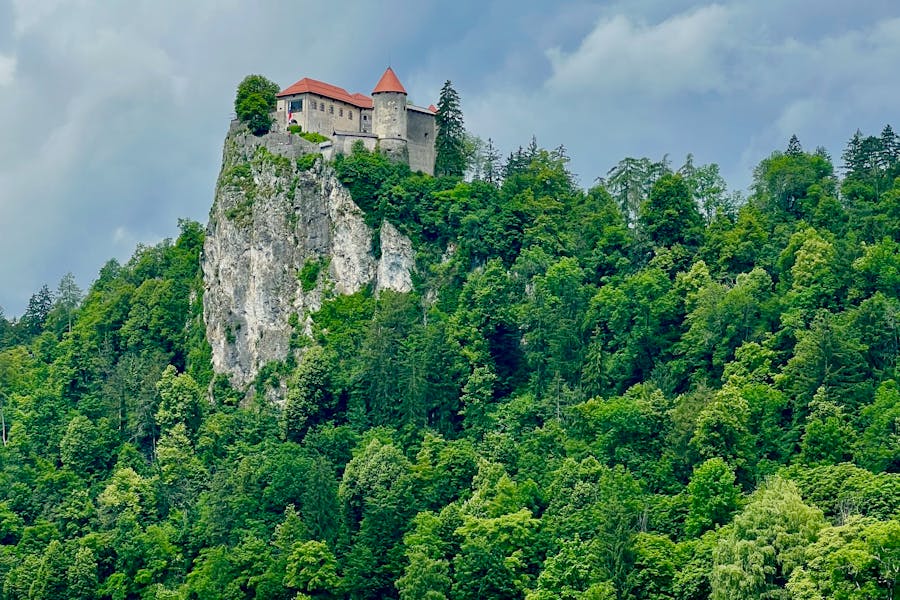
Lake Bled sits just an hour from Ljubljana, way closer than Zakopane is to Kraków. That short hop makes a day trip super tempting.
You can stroll the lake loop, hop a pletna boat to the island, and climb up to Bled Castle all in one go—no need to rush if you start early.
But honestly, spending the night changes everything. Mornings turn magical, with mist curling off the water and only a handful of locals out for a jog.
Evenings? The castle lights up and the crowds melt away. I can’t recommend that enough.
If you’re into hiking or adventure sports, you’ll want to stay longer. Rafting, canyoning, or heading into Triglav National Park often kick off from Bled in the early hours.
People always ask whether to stay a night or just do a day trip. I’d say it depends—if you’re active, stay. If you’re just after the views, a day works.
For photographers, sunrise and sunset here are just unbeatable. I once spent a single night in Bled, and that early morning shot of the island church with the Julian Alps behind it? Easily my favorite photo from all of Slovenia. You just don’t get that if you leave before dusk.
Cultural Experiences and Local Life
Zakopane in Poland and Bled in Slovenia both let you step into mountain traditions that run deep. Local food and festivals bring those traditions to life, and honestly, that’s what keeps me coming back.
Traditional Cuisine
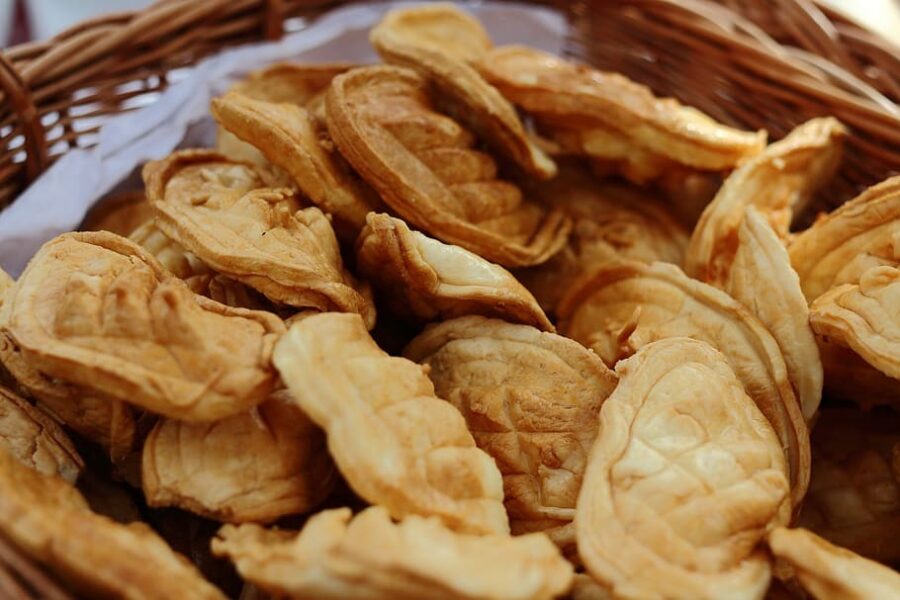
Zakopane’s food is all about comfort and warmth—think hearty mountain dishes that power you through cold winters. Oscypek, the smoked sheep’s cheese, pops up everywhere. Grab it with cranberry jam and you’ll see why locals love it.
You’ll also find dishes like kwaśnica (that’s sauerkraut soup) and rich lamb stews—classic Góralski highlander fare.
Lake Bled’s menus feel lighter, almost delicate by comparison. There’s plenty of freshwater fish, earthy mushroom soups, and buckwheat dishes.
And don’t skip the famous Bled cream cake—it’s a sweet slice of local culture. Zakopane’s food is rustic and filling, while Bled’s leans toward Alpine-Mediterranean freshness.
If food’s your thing, try both. In Zakopane, eat in a wooden inn with folk tunes in the background. In Bled, grab a lakeside table and order trout straight from the lake. The food really tells a story about each place.
Festivals and Events
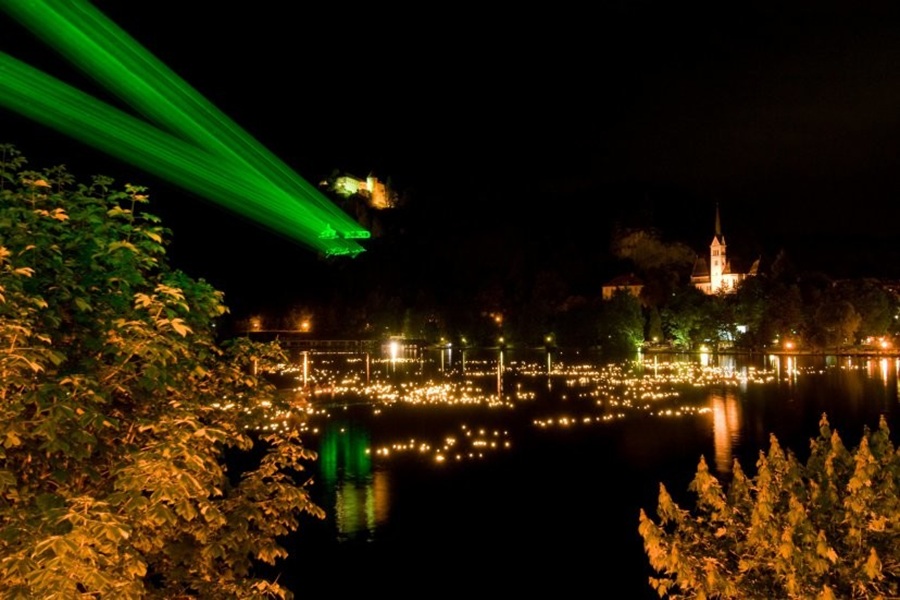
Zakopane’s festival calendar is packed, and it’s all about mountain folklore. The International Festival of Highland Folklore draws in dancers and musicians in full traditional gear.
You’ll hear fiddles, bagpipes, and see wild circle dances that feel timeless. Even small village fairs showcase sheep herding, wood carving, and old-school storytelling.
Bled goes for a different vibe. The annual Bled Days and Bled Night festival lights up the lake with thousands of floating candles. Concerts, craft markets, fireworks—there’s a touch of magic in the air.
Families get into quirky events like the Lake Bled legends, where kids solve puzzles and “defeat” the mythical lake monster.
Both places use festivals to keep their traditions alive and welcome travelers into the fold. Zakopane preserves highlander identity; Bled spins stories and creates shared lakeside memories.
Budget Considerations and Value
If you’re torn between Zakopane and Bled, it usually comes down to how much you’ll shell out for lodging and meals. Both can be budget-friendly, but one definitely stretches your money further.
Accommodation Options
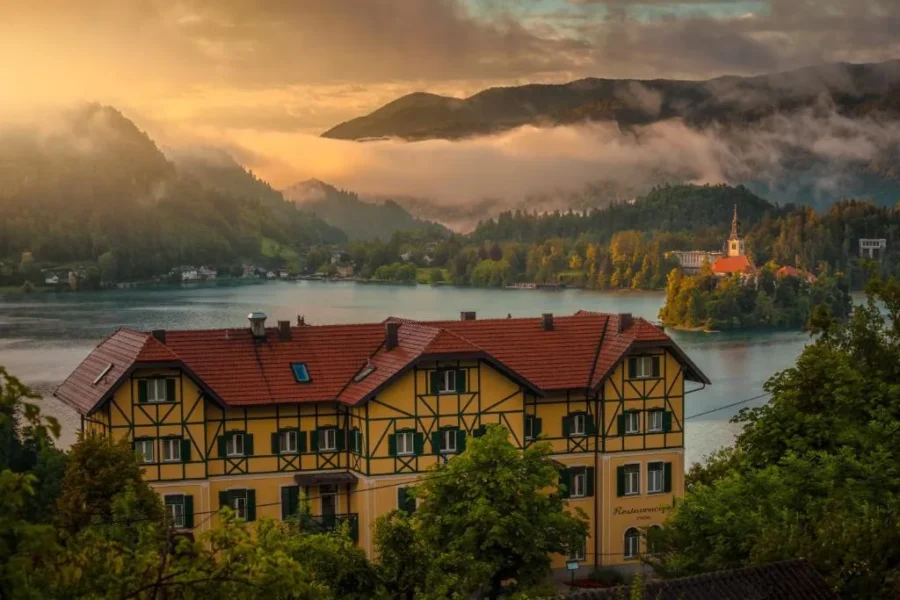
Zakopane wins for affordability, hands down. Hostels start around $15 a night, and mid-range hotels hover near $80—way less than most Alpine resorts.
Even a 5-star hotel in town can be under $130 a night, which is wild for a mountain destination.
Bled, though, is pricier. Guesthouses and small hotels are everywhere, but you’ll pay more for the same comfort than in Zakopane. That lake view is gorgeous, but you’re definitely paying for it.
If you love comparing prices, check Booking or Expedia for a snapshot of what’s available. Personally, I find Zakopane offers more value if you’re staying more than a weekend.
Dining and Cost of Living
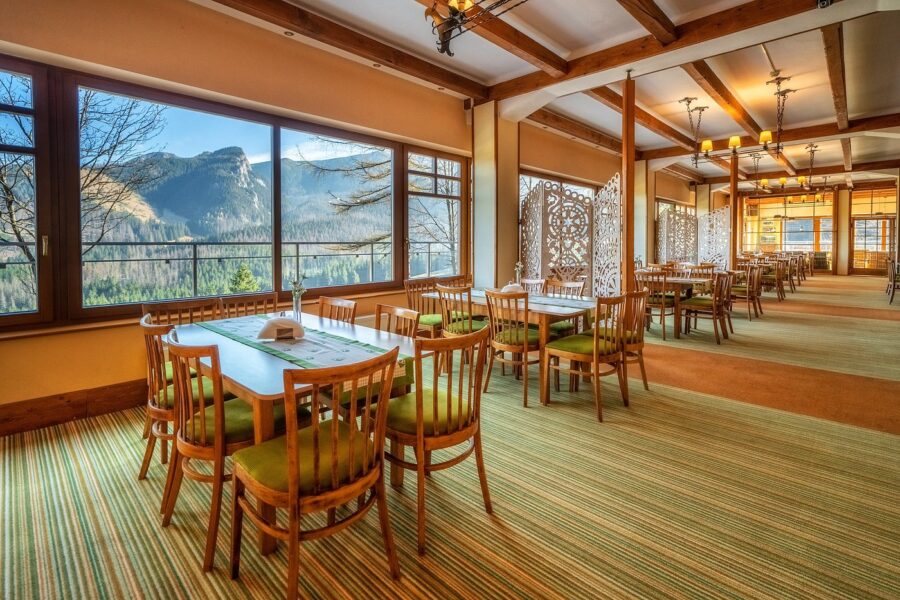
Zakopane shines for budget travelers. You can eat well for about $30 a day, and mountain classics like pierogi or oscypek won’t empty your wallet. Drinks—beer or wine—are also way cheaper than in Slovenia.
Bled’s dining scene is more of a splurge. A lakeside dinner can easily cost double what you’d spend in Poland, especially if you go for fish or Slovenian wine.
Still, you can find solid bakeries and cafés where a pastry and coffee cost just a few euros.
If you want to keep costs predictable, don’t forget about travel insurance. I always recommend a plan from VisitorsCoverage just in case—too many travelers skip it and regret it later.
So if you’re pinching pennies, Zakopane gives you more room to breathe. Bled rewards you with those dreamy views, but you’ll pay for the privilege.
Frequently Asked Questions
Zakopane and Bled both pull in travelers with their mix of culture, scenery, and outdoor fun. Look closer, though, and you’ll spot differences in food, history, and the vibe of an overnight stay.
What unique cultural experiences can travelers expect when visiting either Zakopane or Bled?
Zakopane puts highlander, or “Góral,” culture front and center. You’ll spot wooden chalets carved with crazy detail and locals in traditional outfits during festivals.
Krupówki Street feels like a living folk museum, buzzing with music, crafts, and cheese stalls.
Bled leans into Slovenia’s Alpine traditions with a dash of Central Europe. You’ll notice it in the slower pace, lakeside cafés, and the old-world charm around Bled Castle. It’s less about costumes, more about quiet heritage.
How do the outdoor adventure opportunities compare between Zakopane and Bled throughout the year?
Zakopane is a year-round playground. Winter brings skiing in the Tatras; summer means endless hiking and mountain biking.
I hiked to Morskie Oko in September once, and those autumn colors still stick with me.
Bled offers gentler adventures. Walk or bike the lake loop, paddle out to the island church, or hike up for those classic views.
If you want something wilder, Vintgar Gorge is a short but jaw-dropping walk through carved rock and rushing water.
Can you highlight the differences in the culinary scenes of Zakopane and Bled for food-loving tourists?
Zakopane is all about cheese—oscypek grilled and served with cranberry jam is everywhere. Hearty mountain food rules: potato pancakes, stews, and soups that’ll warm you right up.
Bled’s claim to fame is the Bled cream cake, best eaten at the Park Hotel café where it was invented. The food here feels lighter, with Mediterranean touches and plenty of fresh fish from local rivers and lakes.
What are the considerations for lodging and accommodations when choosing between a stay in Zakopane or Bled?
Zakopane offers a huge range of guesthouses and mountain lodges, many run by local families. Rooms feel cozy, sometimes a bit old-school.
If you like energy, stay near Krupówki Street—just be ready for some noise.
Bled has more polished options, from lakeside hotels with island views to boutique spots tucked in the hills. Places like Hotel Triglav focus on quiet luxury and great food.
If you want peace and scenery, Bled is easier to manage.
Could you elaborate on the historical significance and landmarks that set Zakopane and Bled apart?
Zakopane’s history is woven into Poland’s cultural identity. Artists and writers flocked here in the late 1800s, inspired by the Tatra landscape.
You’ll spot the unique Zakopane architectural style—thanks to Stanisław Witkiewicz—in many wooden houses.
Bled’s history stretches way back, with Bled Castle dating to 1011. The island church adds a touch of legend, with its wishing bell that travelers still ring.
Later, Bled became a 19th-century health resort for European nobility.
What are the best times of year to visit Zakopane and Bled for those seeking optimal weather and event experiences?
Zakopane really comes alive in winter, especially if you love skiing or snowboarding. But honestly, summer here is a blast too, with all the hiking festivals and those spontaneous outdoor concerts that just pop up.
Spring and autumn in Zakopane feel a bit more laid-back. The weather? Well, it can surprise you—sometimes sunny, sometimes not, so pack for anything.
Now, Bled hits its sweet spot between May and September. Warm weather, lake swims, and lazy afternoons by the water just feel right.
Winter in Bled, though, kind of sneaks up on you with its magic—snow on the mountains, barely any crowds, and this cozy, festive vibe around Christmas.
If you’re not a fan of waiting in line for the gorge or the island boats, late spring is honestly your best bet.



